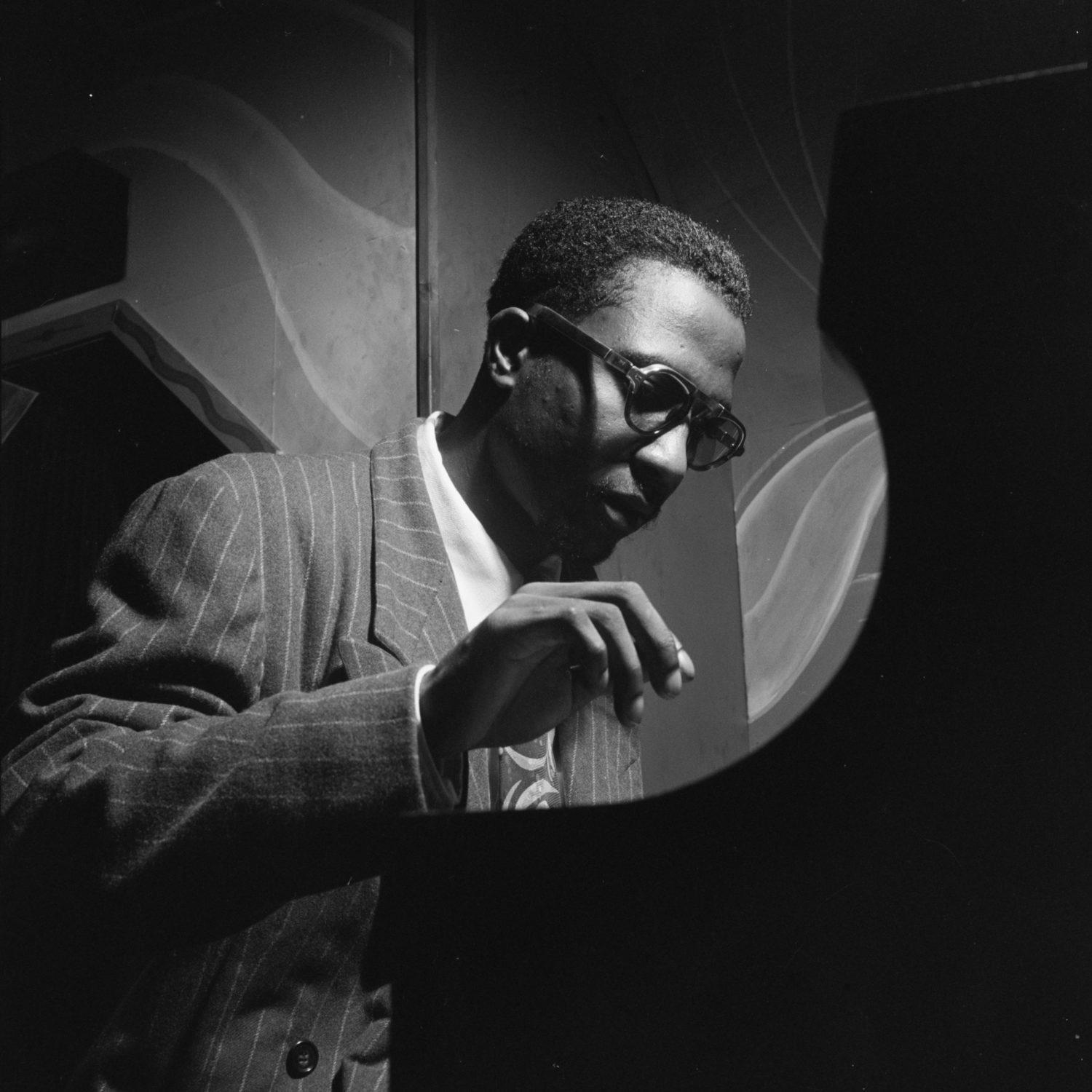“52nd Street, Jazz and the Photography of William Gottlieb” features compelling images of mid-20th century jazz greats, including Louis Armstrong, Billie Holiday and Charlie Parker.
But the exhibition is much more than pictures of jazz celebrities in the 1940s, shot when they were breaking into the mainstream of American culture. It is about depicting the musicians’ charisma and joyful devotion to their art form – while performing and even posing for photographer Gottlieb (1917-2006). While these dozens of photos were taken with bulky analog equipment nearly 80 years ago, they express so much creative energy and vitality today that viewers are naturally drawn into them.
As the show’s wall labels explain, “Manhattan’s 52nd Street formed a hub of musical creativity in the years immediately following World War II. It was here where legacies were created giving recognition to musicians such as Dizzy Gillespie, Thelonious Monk, Ella Fitzgerald, and other emerging jazz geniuses of the era.”

Ella and Dizzy (Photo courtesy of William P. Gottlieb/Ira and Leonore S. Gershwin Fund Collection, Music Division, Library of Congress.)
The didactics further extol the valiant efforts of Gottlieb who haunted New York’s jazz clubs in the 1940s. Working as assistant editor and unpaid photographer at Down Beat magazine, he shot more than one thousand photos of jazz performers, most of them African American, along with club doormen, managers and the mostly white audience members. “Gottlieb’s images are rare glimpses into the New York jazz scene of the 1930s and 40s and helped found a tradition of jazz photography that remains a vital subgenre today,” the show’s didactics explain.
Had Gottlieb not fallen in love with jazz, befriended the musicians, and decided to photograph them, along with their magnetic jazz club scenes, images of many performers of that era might not be preserved for posterity. Exhibition curator Benjamin Cawthra, Ph.D. explained that Gottlieb revisited the photos in 1979, and soon after published his book The Golden Age of Jazz, presenting his historic images to the general public for the first time. He donated his jazz photographs – possibly the most widely reproduced images of jazz musicians from the mid-20th century – to the Library of Congress in 1997. Filmmaker Ken Burns used many of the photos for his 2001 PBS documentary, Jazz: The Story of America’s Music.
Cawthra added that the pictures not only displayed stories; they also helped to shape them, as the images often provided publicity for emerging musical artists. He explains in Blue Notes in Black and White: Photography and Jazz © 2011, that jazz photographers may “seize a moment just as their subjects do in the midst of a performance” (recalling “the decisive moment” quote by French photographer Henri Cartier-Bresson). As Gottlieb wrote in 1995: “I learned to shoot very carefully. I knew the music, I knew the musicians, I knew in advance when the right moment would arrive. It was purposeful shooting.”

52nd Street at Night Manhattan, New York, 1948 (Photo courtesy of William P. Gottlieb/Ira and Leonore S. Gershwin Fund Collection, Music Division, Library of Congress.)
Perhaps the most striking picture in the exhibition is 52nd Street at Night: Manhattan, New York. The color shot of jazz’s main passageway displays a row of several jazz clubs’ neon signs, which are simultaneously reflected onto the rain-soaked street. The photo evokes paintings from the Impressionist era, particularly those of Vincent Van Gogh who often created urban scenes at night.

Billie Holiday (Photo courtesy of William P. Gottlieb/Ira and Leonore S. Gershwin Fund Collection, Music Division, Library of Congress.)
Gottlieb’s portrait of Billie Holiday belting out a song, which Cawthra says may be the most widely reproduced photograph of her, captures her beauty and anguish. The contrasting photo of singer Ella Fitzgerald performing, with Dizzy Gillespie blissfully looking on, reveals the two more sublime and content performers.
A photo of the young, serious Thelonious Monk (composer of the renowned Round Midnight) at his piano in 1947 helped give him much-needed publicity – along with Gottlieb’s articles about him in Down Beat. Cawthra wrote: “Monk’s distinctive voice on his instrument, his gentle and idiosyncratic persona, and his lasting legacy as a jazz composer make him one of the most important American musicians.”
Belgian-Romani guitarist Django Reinhardt playing his guitar while peering intensely at the audience is included in this stunning exhibition. Here also is a photo of an exuberant Lionel Hampton playing percussion, alongside Arnett Cobb on the saxophone, and another of the dapper pianist Duke Ellington preparing for a performance.
Viewing a portrait of Charlie Parker intently playing his saxophone, you can almost hear his “inventiveness, speed, and command of jazz’s harmonic and rhythmic language,” as Cawthra wrote for the exhibition. And the compassionate photo of Louis Armstrong, playing his trumpet with his eyes wide open, portrays the musician when he was young but already confident and successful.
Other photos depict singers Cab Calloway, Mary Lou Williams, Nat King Cole and Frank Sinatra, guitarist Josh White, Harry James on the trumpet, Benny Goodman on the clarinet and several others.

Thelonious Monk (Photo courtesy of William P. Gottlieb/Ira and Leonore S. Gershwin Fund Collection, Music Division, Library of Congress.)
If this exhibition was displayed in a larger venue, the photos might be accompanied by performance videos. (The Smithsonian’s Museum of African American History contains numerous videos of pioneering black performers.) Yet the images are so powerful that they stand alone in their artistry and excellence, expressing the truism that art, whether it is visually or musically oriented, is a powerful expression of the human spirit.
“52nd Street, Jazz and the Photography of William Gottlieb” is on view through May 1. Great Park Gallery, Palm Court Art Complex, Orange County Great Park, Irvine; Thu. & Fri., noon-4 p.m.; Sat. & Sun., 10 a.m.-4 p.m.; free. cityofirvine.org/orange-county-great-park/arts-exhibitions.
Advertising disclosure: We may receive compensation for some of the links in our stories. Thank you for supporting Irvine Weekly and our advertisers.

